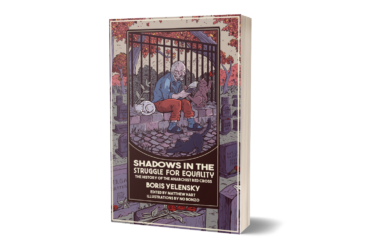By C.J. Bunce
Borg
November 12th, 2023
More than 50,000 Asian Americans serve on active duty in the U.S. military.
If you enjoyed the brilliant HBO Max series Warrior, you no doubt recall being introduced to the “coolies”–actually a historical derogatory term for Chinese and Southeast Asian immigrants. In Warrior, Bruce Lee envisioned both fantastical and historical fictionalized accounts of Chinese men in San Francisco. The result was the best of both worlds–a taste of history and characters that make you feel deeply for their struggles. A new book digs into the history behind these immigrants with a four-pronged approach, beginning with a select example of a key event that sheds light on the bigger picture. Part graphic novel, part guide for new students on the subject, The Cargo Rebellion: Those Who Chose Freedom is available now here at Amazon.
First off, compared to most the graphic novels reviewed at borg, the illustrated portion of this story is very brief–about 23 pages. That illustrated story doesn’t home in on specific characters, but recounts the 1852 mutiny of one ship where the indentured servants had contracted to be shipped to San Francisco. The captain en route began directing them to a more dangerous destination, prompting the crew to rebel and kill the captain. The ship then ran into a reef near modern-day Okinawa, and the survivors dispersed. The resulting trial laid the groundwork for a change in international maritime law.

Authors Jason Chang, Benjamin Barson, Alexis Dudden, and illustrator Kim Inthavong use this story to lay the groundwork for students of history to understand the tie between forced labor and immigration historically and remaining today in the form of human trafficking.
But the book goes further to document the historical record behind the “Cargo Rebellion” and similar accounts in Professor Dudden’s essay, “The Robert Bowne Mutiny.” What do primary source materials say about this event, what political ideologies were behind the conflicting accounts, and why is this piece of history forgotten–or at least not included–in the curricula of modern classrooms?

Professor Chang continues the discussion in “Teaching Asian Indenture,” a teacher’s guide on the subject, including the results of his own methods and research with students.
Finally, musical scholar Barson introduces how early Asian immigration in the U.S. from the 1840s onward still lives on despite the history–the stories–being forgotten, in his essay “From Plantation Discussion to the Sound of Solidarity: Afro-Asian Echoes in the Drum Set.” Barson compares the African American experience with slavery and preservation of culture using music in Louisiana. He explains that the modern drum set–played and seen in every rock band–is witness to the interplay of Chinese/Southeast Asian with African culture, utilizing cymbals and toms together, and he includes historical photographs showing specific sets that illustrate this. For students this will be a great hook, since kids sometimes need that kind of cool history tidbit to get ensnared into a subject.
It’s undisputed that the Asian American experience has not been as explored in media and education in modern America as other cultures. A smart and interesting introduction to the politics of Asian immigration, slavery, indentured servitude, and cross-culture studies, The Cargo Rebellion: Those Who Chose Freedom, available in hardcover and well-suited for classroom use, can be purchased here at Amazon.







